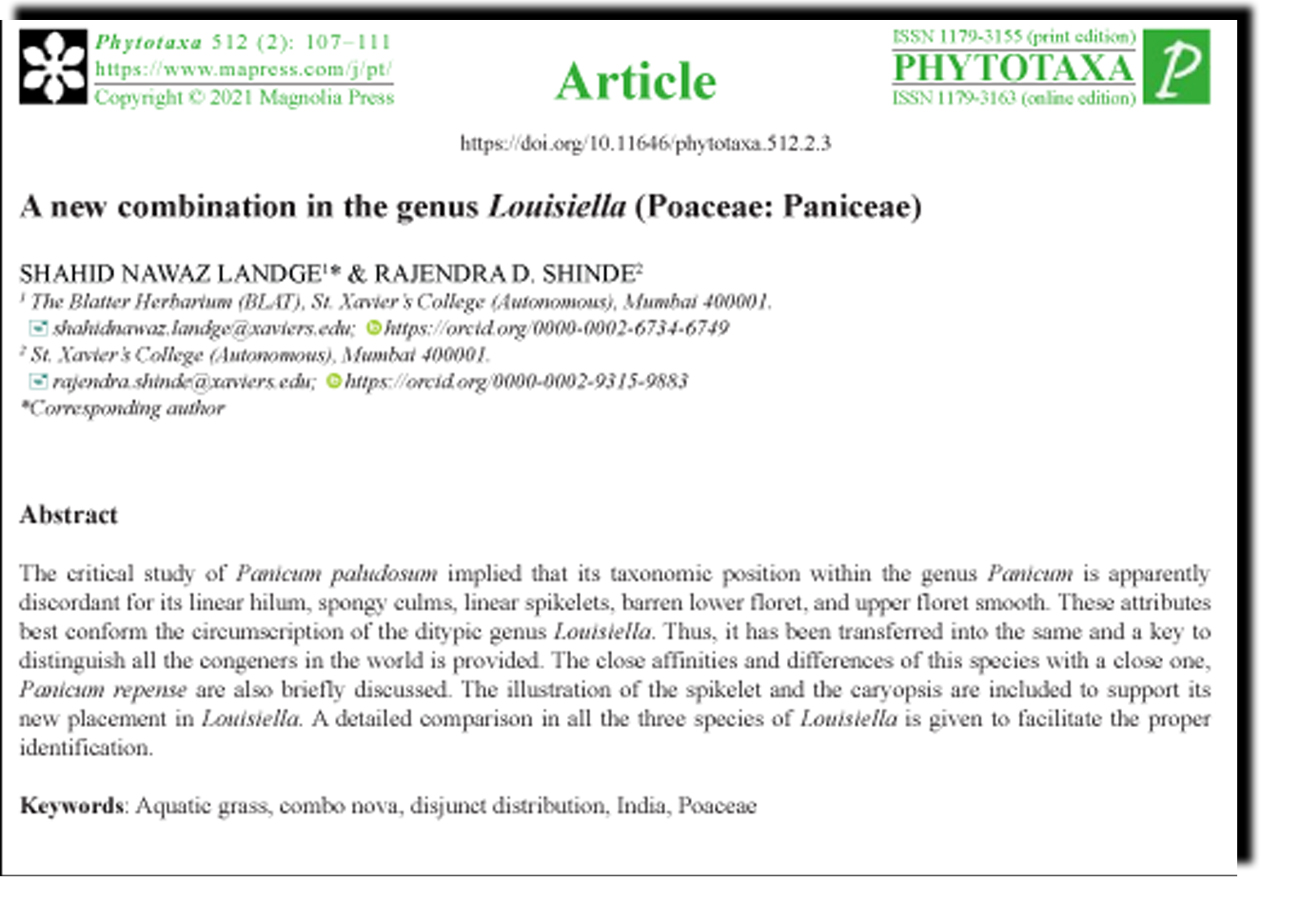Abstract
The critical study of Panicum paludosum implied that its taxonomic position within the genus Panicum is apparently discordant for its linear hilum, spongy culms, linear spikelets, barren lower floret, and upper floret smooth. These attributes best conform the circumscription of the ditypic genus Louisiella. Thus, it has been transferred into the same and a key to distinguish all the congeners in the world is provided. The close affinities and differences of this species with a close one, Panicum repense are also briefly discussed. The illustration of the spikelet and the caryopsis are included to support its new placement in Louisiella. A detailed comparison in all the three species of Louisiella is given to facilitate the proper identification.
References
<p>Bor, N.L. (1940) Flora of Assam (Gramineae), 5. Government of Assam, Shillong, pp. 229–230.<br>Bor, N.L. (1960) The Grasses of Burma, Ceylon, India & Pakistan (Excluding Bambuseae). Pergamon Press, London, 767 pp.<br>Clayton, W.D., Vorontsova, M.S., Harman, K.T. & Williamson, H. (2006 onwards) GrassBase - The Online World Grass Flora. Available from: http://www.kew.org/data/grasses-db.html (accessed 6 June 2019)<br>Cope, T.A. (1982) Poaceae vol. 143. In: Nasir, E. & Ali, S.A. (Eds.) Flora of Pakistan. Pakistan Agricultural Research Council and University of Karachi, Pakistan, 169 pp.<br>Hubbard, C.E. & Léonard, J. (1952). A new genus of Gramineae from tropical Africa. Bulletin du Jardin botanique de l’État à Bruxelles. Brussels 22: 312–318. https://doi.org/10.2307/3666763<br>Kellogg, E., Abbott, J.R, Bawa, K., Gandhi, K., Kailash, B.R, Ganeshaiah, K.N., Babu, Shrestha, U. & Raven, P. (2020) Checklist of the grasses of India. PhytoKeys 163:1–560. https://doi.org/10.3897/phytokeys.163.38393<br>Linneaus, C. (1762) Species Plantarum, 1. Impenses Direct Laurentii Salvii, Homiae, 784 pp.<br>Roxburgh, W. (1820) Flora Indica: Descriptions of Indian plants, 1. Mission Press, Serampore, 310 pp.<br>Scataglini, M.A., Lizarazu, M.A. & Zuloaga, F.O. (2014) A Peculiar Amphitropical Genus of Paniceae (Poaceae, Panicoideae). Systematic Botany 39 (4): 1108–1119. https://doi.org/10.1600/036364414X683886<br>Simon, B.K. & Alfonso, Y. (2011) AusGrass2. Available from: http://ausgrass2.myspecies.info/ (accessed 12 December 2020)<br>Thiers, B. (2020) [continuously updated] Index Herbariorum: A global directory of public herbaria and associated staff. New York Botanical garden’s Virtual Herbarium. Available from: http://sweetgum.nybg.org/ih/ (accessed 12 December 2020)<br>Trinius, C.B. (1826) De Graminibus Paniceis: Dissertatio Botanica Altera. Petropoli, 206 pp. https://doi.org/10.5962/bhl.title.15256<br>Zuloaga, F.O., Salariato, D.L. & Scataglini, A. (2018) Molecular phylogeny of Panicum s. str. (Poaceae, Panicoideae, Paniceae) and insights into its biogeography and evolution. PLoS ONE 13 (2): e0191529. https://doi.org/10.1371/journal.pone.0191529</p>


